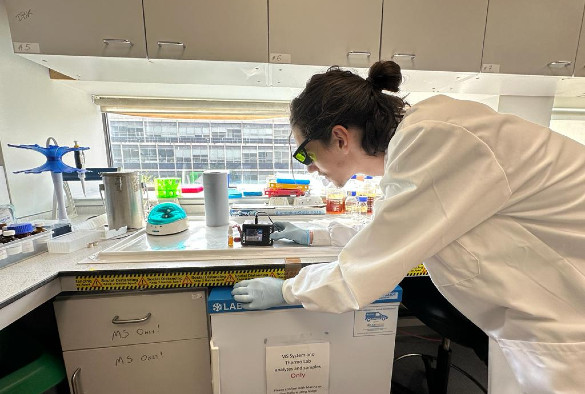
Paul Richardson is a fourth year PhD student based in the Centre for Metabolomics Research. His PhD is funded by the University of Liverpool and his research focuses on using infrared and Raman spectroscopy to study bacteria at single-cell. His recent work has included analysis of vaping e-liquids via these techniques.
Multi billion-dollar industry not without controversy
Since its emergence in the late 2000s, vaping has rapidly grown into a multi-billion dollar industry worldwide. Originally marketed as a smoking cessation aid that allowed users to keep up the act of smoking while avoiding many of the harmful chemicals from traditional tobacco, the customisability of nicotine content and flavour, among other aspects, led to many adopting the product without being prior smokers.
This rapid growth led to a variety of controversies, from concerns about youth nicotine addiction, questions regarding the efficacy as a smoking cessation aid and the safety of the ingredients, to hospitalisations and even deaths resulting from vaping liquids that had been tampered with, to name a few. Even now, differences in regulations between the UK and other countries can allow less scrupulous vendors to sell products that do not meet restrictions, such as the 1800 vapes recently seized by Liverpool City Council and Merseyside Police for being over the 20 mg/mL nicotine limit.
Need for high-throughput analysis of e-liquids
The novelty and need for urgent results led researchers to focus on chromatographic methods, which involve the separation of compounds based on their properties and analysis using extremely sensitive methods like mass spectrometry, to analyse e-liquids. While these are the most sensitive and precise methods available, they are slow, expensive and require specialists to run, making them poorly suited for high-throughput routine analysis.
Applying Raman spectroscopy
My research focuses on analysing bacteria using non-destructive chemical analysis methods like Raman spectroscopy. Having worked previously at a company that provided mass-spectrometry analysis services of e-liquids, part of my desire to research this area was simply curiosity. However, Raman also presented a great option as a complementary method – although less sensitive or precise, it is fast, inexpensive, portable and easy to use.
I’ve already published this part of my PhD research in the journal Analyst. Our research showed that, combined with statistical analysis, Raman spectroscopy could quantify the ratio of propylene glycol to glycerol – the two main constituents of e-liquids – and the nicotine commercial samples without diluting or altering the e-liquids in any way. We were also able to replicate these results by shining the laser through the refill bottles, meaning this analysis could be done without opening the product. This is potentially useful to both regulatory bodies wanting to spot check products in a store, for example, or for producers wanting a consistent and simple quality assurance tool. Finally, we discussed the necessary steps to turn this proof of concept into a usable product, highlighting the current technology available to achieve this.
Science from home
While I had thought of the idea for this research a year prior, I started in September 2020, around the time where the growing second wave of COVID risked a return to lockdown. I was concerned about starting an experiment using bacteria – the main focus of my PhD – that would need to be stopped at a moment’s notice with no results to analyse, and when I pitched the idea to my supervisor Roy Goodacre, he was happy for me to go ahead. In fact, although the second lockdown never happened, I did take my samples and the Raman instrument home and gathered some spectra in my kitchen over the Christmas holidays!
Future work
My PhD experience has really cemented my desire to stay in academia for the foreseeable future. The area of research I am interested in lies firmly in analytical chemistry, and I hope to keep learning about the various analytical methods that exist and the data analysis that goes alongside them. Ideally, I would like to develop accessible analysis tools to monitor food, consumable products, soil, or any other products that need keeping track of (or pique my curiosity).